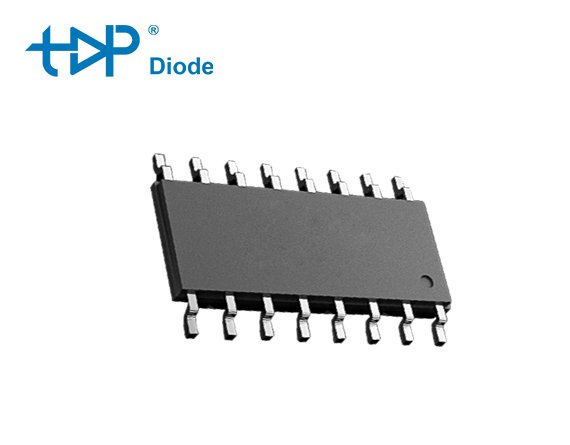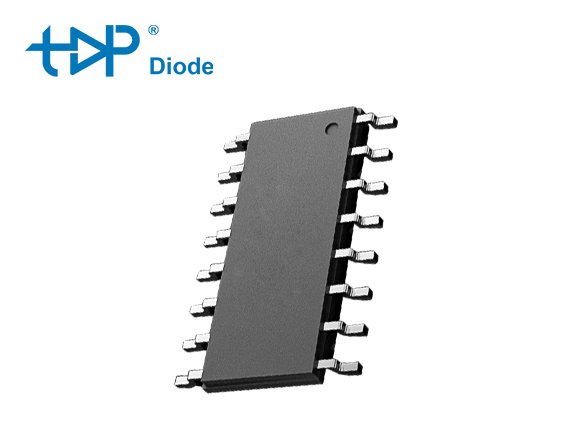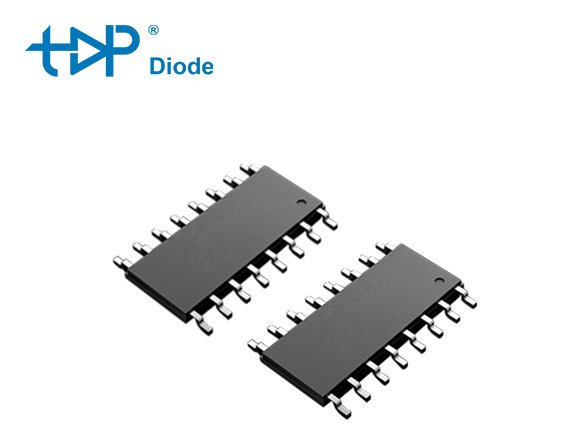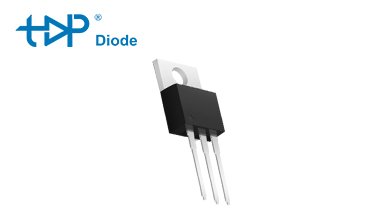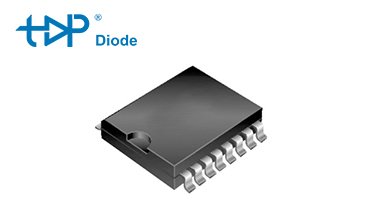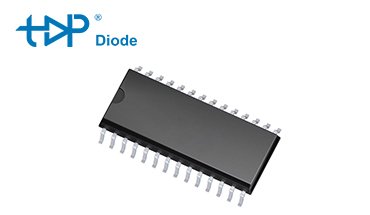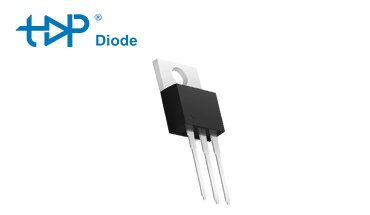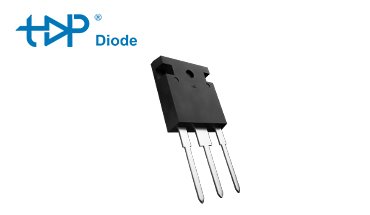Audio Amplifier IC (Integrated Analog Input) TPA2092 Topdiode (IRS2092)
- Integrated analog input Class D audio amplifier driver in a small 16 pin package
- Floating inputs enable easy half bridge implementation
- Programmable bidirectional over-current protection with self-reset function
- Programmable preset deadtime for improved THD performances
- Start and stop click noise reduction
- High noise immunity
- +/-100 V ratings deliver up to 500 W in output power
- Operates up to 800 kHz
- RoHS compliant
Audio Amplifier IC (Integrated Analog Input) TPA2092 Topdiode (IRS2092)
TOPDIODE TPA2092 is a Protected Digital Audio Amplifier IC.
It is a high Voltage, high performance Class D audio amplifier driver with PWM modulator and protection in a 16-Lead SOIC Narrow Package (SOIC-16).
Topdiode Audio Amplifier IC TPA2092 has outstanding performance in Home theater systems, Mini component stereo systems,Powered speaker systems and General purpose audio power amplifiers.
Topdiode TPA2092 is a nice alternative offer for Infineon Audio Amplifier IC IRS2092STRPBF.
Topdiode Audio Amplifier IC (Integrated Analog Input) TPA2092 DATA
- Tab
| Topdiode PN | TPA2092 |
| Description | Audio ic |
| Class | Class D |
| Output Polarity | OP input |
| Operating Voltage | 250V |
| PD | 1W |
| IO+/IO- | 2A/2A |
| Package | SOIC16(S) |
| Cross to Brand | Infineon |
| Pin to Pin Cross P/N | IRS2092 |
Topdiode Hot Selling Products (6)
Audio Amplifier IC Datasheet
Topdiode Audio IC Applications


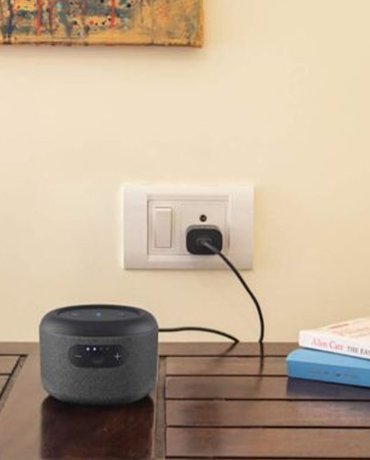
An audio amplifier IC, also known as an integrated circuit, is a small electronic device that amplifies low-power audio signals to a higher power level suitable for driving speakers or headphones.
It combines various components such as transistors, resistors, and capacitors into a single chip, making it compact and efficient. Audio amplifier ICs are commonly used in consumer electronics like smartphones, laptops, televisions, and audio systems to enhance the sound quality and volume output.
It works by taking in an input signal and increasing its amplitude while maintaining the same waveform shape. The basic operation of an audio amplifier IC involves several stages.
First, the input signal is received and passed through a pre-amplification stage where it undergoes initial amplification. This stage helps boost the weak incoming signal to a more usable level.
Next, the amplified signal goes through various processing stages such as filtering and equalization to enhance specific frequency ranges or remove unwanted noise. These stages help improve the overall sound quality before further amplification.
After processing, the signal enters the main amplification stage where it receives significant gain in power. This stage utilizes transistors or other active components within the IC to increase both voltage and current levels of the audio signal.
Finally, once fully amplified, the output from this main stage is sent to drive speakers or headphones directly. The amplified audio signals are then converted back into sound waves by these devices for us to hear. It’s important to note that different types of audio amplifier ICs exist with varying features and capabilities depending on their intended applications (e.g., stereo systems, mobile phones).
However, they all follow similar principles of receiving an input signal, amplifying it at multiple stages while preserving its fidelity and finally delivering high-powered output for listening purposes.
- High power output: It can provide sufficient power to drive speakers and produce loud sound.
- Low distortion: The IC ensures minimal distortion in the amplified audio signal, resulting in high-quality sound reproduction.
- Wide frequency response: It is capable of amplifying a wide range of frequencies, allowing for accurate reproduction of different types of audio signals.
- Small size and compact design: Audio amplifier ICs are often designed to be small and space-efficient, making them suitable for various applications where size is a constraint.
- Efficient power consumption: These ICs are designed to consume less power while delivering optimal performance, making them energy-efficient.
- Built-in protection mechanisms: Many audio amplifier ICs come with built-in protection circuits that safeguard against overvoltage, overheating, short circuits, etc., ensuring the longevity and reliability of the device.
The applications of audio amplifier ICs are quite diverse. They are commonly used in various electronic devices and systems to amplify audio signals. Some common applications include:
Consumer Electronics: Audio amplifier ICs are widely used in devices such as smartphones, tablets, laptops, televisions, and home theater systems to enhance the sound quality.
Automotive Industry: These ICs play a crucial role in car audio systems by amplifying the low-power signals from radios or media players to produce high-quality sound through speakers.
Public Address Systems: Audio amplifiers find extensive use in public address systems for events, conferences, concerts, and other gatherings where clear and amplified sound is required.
Musical Instruments: Amplifier ICs are utilized in musical instruments like guitars, keyboards, and synthesizers to boost the weak electrical signals produced by these instruments for better audibility.
Professional Audio Equipment: In professional settings such as recording studios or live performances venues, audio amplifier ICs are employed to drive loudspeakers or studio monitors with high fidelity output.
Communication Systems: These ICs also have applications in communication equipment like two-way radios or intercom systems where they amplify voice signals for effective communication.
Power efficiency – produce sound in speakers, not heat to the surroundings.
Integration – be heard, not seen – smaller and lighter is better, bulky, and heavy is history.
Quality – be robust and flexible, not delicate and demanding.
Cost down – Replacement of Infineon, help our partners cost down



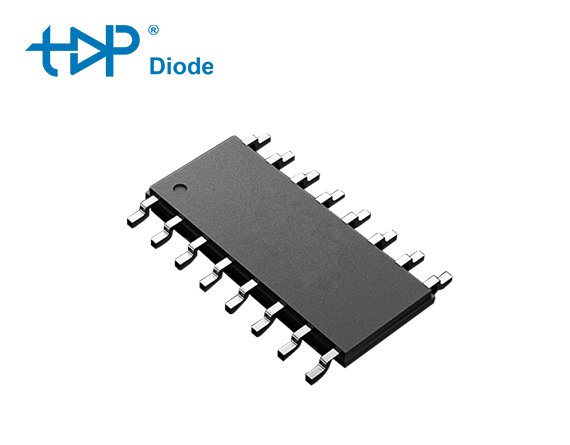
-1.jpg)
